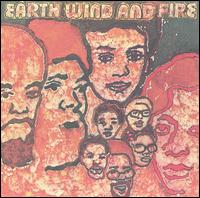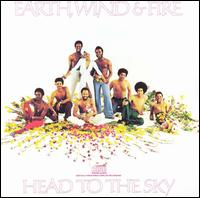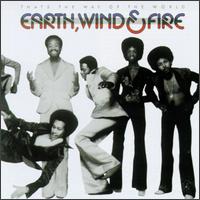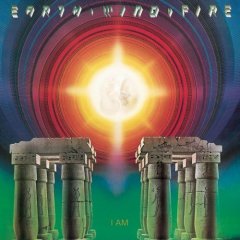It’s been quite a while since we’ve done a Note for Note series, so not only has any entry in this series been a long time coming, but this particular entry has been a long time coming. Years, in fact.
At long last, I’ve joined forces with popdose.com major domo Jeff Giles to discuss the discography and career of one of the most important bands of any genre to emerge in the past half-century, Earth Wind & Fire.
“The Elements” (as they are sometimes called) have a rich, deep and varied catalog. They started out in a bit of a jazz vein, then slid into hard funk. They smoothed out the harder edges as they gained fame throughout the ’70s, making their official breakthrough with 1975’s That’s The Way Of The World and the #1 smash “Shining Star.” Boasting a dual-pronged vocal attack from Maurice White and Philip Bailey (who boasts perhaps the all-time best falsetto in music history,) lyrics that spoke of positivity and love, and a stage presence unrivaled by anyone other than perhaps Parliament/Funkadelic, EW&F were one of the most successful and iconic bands of the decade, right up there with the Bee Gees, the Stones and the Eagles.
In this first installment (of three,) we look at their ’70s output. Studio albums only are included, although we must take a second to point out Gratitude, which is one of the best live albums ever recorded.
 Earth, Wind & Fire (1971)
Earth, Wind & Fire (1971)
Like a lot of bands, Earth, Wind & Fire took some time to find their audience — but as attested by their self-titled 1971 debut, they found their groove earlier than most. Earth, Wind & Fire presents a very different version of the group, one in which future bandleader Maurice White was less of an obviously dominant force and the material had a decidedly issues-oriented bent. Of course, bands pleading for love and tolerance were nothing new in ’71, but few of them were this tight — or boasted horn arrangements this interesting. A middling hit on Billboard’s Black Albums chart, the record sadly failed to make much of a dent on the pop charts, and after the the similarly lukewarm reception afforded The Need of Love later that year, this version of the group’s days were numbered. They’d obviously go on to bigger (and arguably better) things, but listening to funk-fueled cuts like “Fan the Fire,” it’s hard not to wonder what might have been. –JG
The Need of Love (1971)
It isn’t uncommon for new acts to struggle with a shortage of material when the time comes to record that all-important second album, and The Need of Love is proof that Earth, Wind & Fire were no different. You can’t fault the group’s ambition here — Love incorporates free jazz and spoken-word beat poetry into the already-expansive EWF sound — but that doesn’t mean you have to look past this record’s occasionally uninspired songwriting. The opening cut, “Energy,” is nearly 10 minutes long — mainly, one guesses, so the group could get away with adding four more songs and calling it an LP. Still, this isn’t without its moments, among them a cover of Donny Hathaway’s “Everything Is Everything” that opens with some spicy organ riffs before settling into a hypnotic, nearly seven-minute groove. For better or for worse, the market wasn’t really interested in this sound; by 1972, the Earth, Wind & Fire lineup very different — and the band’s sound had evolved, too.-JG
Last Days and Time (1972)
Last Days & Time was Earth, Wind & Fire’s third album, and it found them slowly working on the template that would prove to be their breakthrough just a couple of years later. The sound isn’t totally refined. There’s still some grit that hadn’t been polished off yet, most notably on the slammin’ funk workout “Power.” It’s as good an 8 minutes of groove as you’d get from any similar band of that era. Maurice White also isn’t as present on vocals as he would come to be on later albums, with most of the singing handled by Philip Bailey (who goes back and forth between his natural range and his falsetto more frequently than he would on later albums.) Two of Last Days’ tracks are covers (Pete Seeger’s “Where Have All The Flowers Gone?” and a fairly traditional take on Bread’s “Make It With You,”) but the originals are solid in and of themselves, particularly the Latin-spiced album closer “Ma.” While underlooked in their lengthy catalog, “Last Days & Time” is a mighty fine album from the years before the elements hit pay dirt.-MJ
 Head to the Sky (1973)
Head to the Sky (1973)
Head To The Sky was Earth, Wind & Fire’s commercial breakthrough, reaching #2 on Billboard’s Top Black Albums chart. This breakthrough came despite their signature sound still being a work in progress. The album’s two singles-“Evil” and the title track-charted in the twenties on the soul charts, so there wasn’t a radio breakthrough. Actually, I find Head To The Sky somewhat disappointing in light of its masterful predecessor. Nothing captures the ears the way songs like “Ma” and even “Power” did, with the exception of “Keep Your Head To The Sky.” With its positive affirmations and Philip Bailey’s soaring falsetto, it’s become one of the band’s most enduring classics. The other five songs on Head To The Sky, however, are no great shakes. However, the 15 minute long album closer, “Zanzibar” is an ostentatious mix of jazz, Latin and funk flavors that presages Herb Alpert’s disco-jazz detour in the late Seventies and aligns EW&F, however temporarily, with bands like War and Santana.-MJ
Open Our Eyes (1974)
 That’s the Way of the World (1975)
That’s the Way of the World (1975)
It would be unfair to call Earth, Wind & Fire a singles act, but it’s also hard to deny the fact that the band’s hefty discography — and impressive stack of hits — lends itself well to the “buy the best, ignore the rest” approach. That said, if you’re looking for a non-compilation album to kick off your EW&F collection with, I’d recommend starting with That’s the Way of the World. Hell, the thing kicks off like a best-of record: “Shining Star” and the title track are two of the most enduring songs from the band’s entire catalog, and for very good reason. But it isn’t just the hits that make World one of the best EW&F records — it’s stacked with solid deep cuts, including the booty-shaking “Happy Feelin'” and “Yearnin’ Learnin.'” About the only track I skip over — and I know I’m in the minority here — is the Bailey showcase number “Reasons,” which finds him scaling ridiculous falsetto heights. Good for a slow dance, but that’s about it. –JG
Spirit (1976)
Spirit was the first studio album Earth, Wind & Fire released after the twin commercial breakthroughs of That’s the Way of the World and the live album Gratitude. It was the most slick-sounding album they’d done up to that point. Part of that might have been due to a desire to continue their success, while part of it might also have been due to the loss of their original producer, Charles Stepney.
Peaking at #2 on the pop and R&B charts, Spirit is a triumphant slice of pop/funk that cemented their status as the biggest R&B band in the world. The propulsive “Getaway” got the album off to an exciting start, while songs like “Saturday Nite” and “On Your Face” combined bouncy grooves with positive lyrics. “Imagination” was the designated Philip Bailey slow jam in the vein of That’s the Way of the World’s “Reasons,” while the album closer, “Burnin’ Bush,” nodded towards disco in a way that led a path to a sound that would become more common for the band by the decade’s end. Spirit wound up successfully navigating a pretty tricky fork in the road — it matched the success of the band’s breakout album without sounding like a bored (and boring) retread. –MJ
All ‘n All (1977)
With their next album, I Am, EW&F started making concessions to trends rather than setting them, and although that approach certainly yielded dividends on occasion, it wouldn’t be unreasonable to call All ‘n All the last great hurrah of the band’s golden era. I mean, “Serpentine Fire”? Damn. That would be worth the price of the album all by itself, but All ‘n All packs in plenty of other highlights, including “Fantasy” (one of Bailey’s ballsier tracks), the sweaty “Jupiter,” and toe-tapping “Magic Mind.” As always, the various interludes are pretty skippable, although in this case they (along with songs like “Runnin'”) offer an interesting example of the way white-suited Latin funk infiltrated the charts during the period. There are moments when it’s hard to tell whether you’re listening to Chicago or Earth, Wind & Fire — which wasn’t such a bad thing in 1977. –JG
 I Am (1979)
I Am (1979)
Coming at the beginning of 1979, I Am found Earth, Wind & Fire making sort of an uneasy peace with disco, which at the time was the dominant genre in soul music. The album was a huge hit, but for the first time in the band’s career, something feels missing. It appears that Earth, Wind & Fire were running out of that last element in their name. Many of the songs sound like retreads: “Can’t Let Go” is a baldfaced rewrite of “September,” their most recent hit prior to I Am’s release. Aside from the peppy album opener “In the Stone,” most of the dance tracks on I Am sound uninspired, lacking the fire that made songs like “Fantasy” and “Getaway” intriguing listens on and off the dance floor. There’s also an ill-advised foray into dance-prog-rock with the instrumental track “Rock That!” Ever wondered what the unholy union of EW&F with ELO might have sounded like? Probably this song.
Thankfully, the ballads were good enough that they sort of masked the downward slide. The wistful “After the Love Has Gone” remains one of the best ballads in the band’s canon, and although “You & I” comes pretty close to being EW&F by numbers, it’s still got a smooth and insinuating midtempo groove. This album more or less marked the end of the band’s period as the biggest R&B group in the nation. The Jacksons and Shalamar were younger and funkier, and the Pointer Sisters and Kool & the Gang were smoother and poppier. –MH
The 1980s brought forth a new set of challenges for Earth, Wind & Fire. Black music (not to mention pop music) changed rapidly. We’ll take a look at those challenges (and their discography throughout the decade) in the next installment of Note For Note. Stay tuned!





2 comments
HeavySoulBrutha DaveB. says:
Apr 21, 2014
Solid piece here! I heard a cut off “Open Your Eyes” called, “Fair But So Uncool” today that reminded me, although I’ve heard the hits on that record, I don’t have it and will be digging for that one. Peace and SOUL… HSB
MJ says:
Apr 21, 2014
“Fair But So Uncool” is a jam.